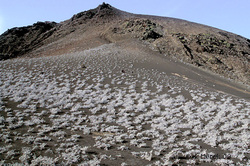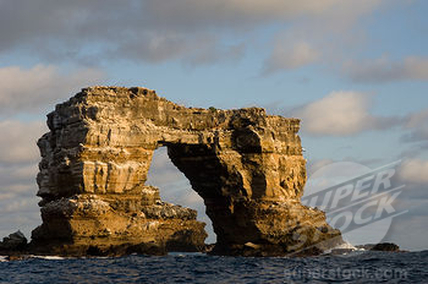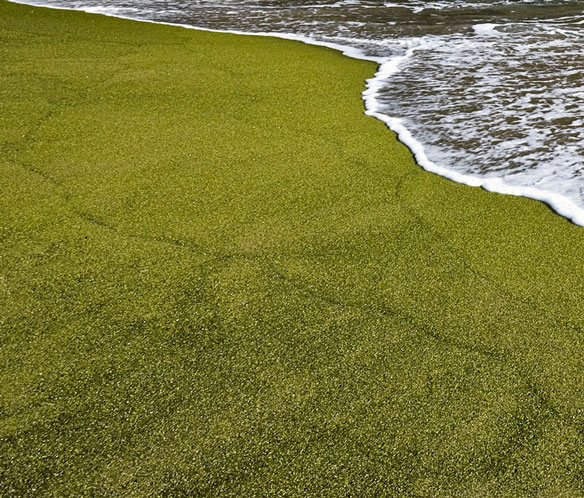Though Volcanism is the primary source of resurfacing in the Galapagos Islands, erosion also plays a part in the physical shaping of the islands. The main source of erosion in the islands is water, driven mostly by the sea, but also by rainfall. Spheroidal weathering occurs in the islands as well. This type of weathering occurs when rounded shells of decayed rock are consecutively divided from a block of rock. The islands with these components happen to be the oldest in age, with evidence pointing at the lack of volcanic resurfacing. When surveying the Galapagos physical makeup, Darwin noticed that most of the island's volcanic cones were higher in elevation on northeast side. This is due to the wind blowing volcanic ash to the northeast side of the islands.

Gray Matplants on Bartolome Island
Due to the desert-like climate in the majority of the islands, the plants and animals have to conserve as much water as possible. For example, the Gray Matplant (shown to the left) is widely spaced or even missing altogether on the steeper slopes, while appearing more crowded in places that take advantage of water drainage. This spacing is regulated by the root systems of individual plants battling for a few drops of water underneath the surface.
The soil makeup of the Galapagos isn't very well developed, due to the young age of the volcanic islands. In the older parts of the islands, in the higher elevations, red soil can be found. These red soils usually form from iron-rich sedimentary rock, and are generally poor for growing due to their lack of nutrients and humus. On the more recent land surfaces, black soils, such as Vertisol, can be found. These soils have a high content of expansive clay, known as Montmorillonite, that form deep cracks in dryer seasons. Vertisol is also quite poor for cultivating. The most well known soil (actually a component of soil) of the islands is the green sand (shown above) found on the beaches of Floreana. The green tint is in fact caused by large deposits of Olivine crystals, a magnesium iron silicate, that have been eroded over time from lava rocks.
Sources: http://www.doc.ic.ac.uk/~kpt/terraquest/galapagos/atlas/geology/geology.html
http://www.ehow.com/info_8098663_ocean-beaches-sand-types.html
Hess, John. The Galápagos: Exploring Darwin's Tapestry. Columbia: University of Missouri, 2009. Print.
http://www.ehow.com/info_8098663_ocean-beaches-sand-types.html
Hess, John. The Galápagos: Exploring Darwin's Tapestry. Columbia: University of Missouri, 2009. Print.


 RSS Feed
RSS Feed